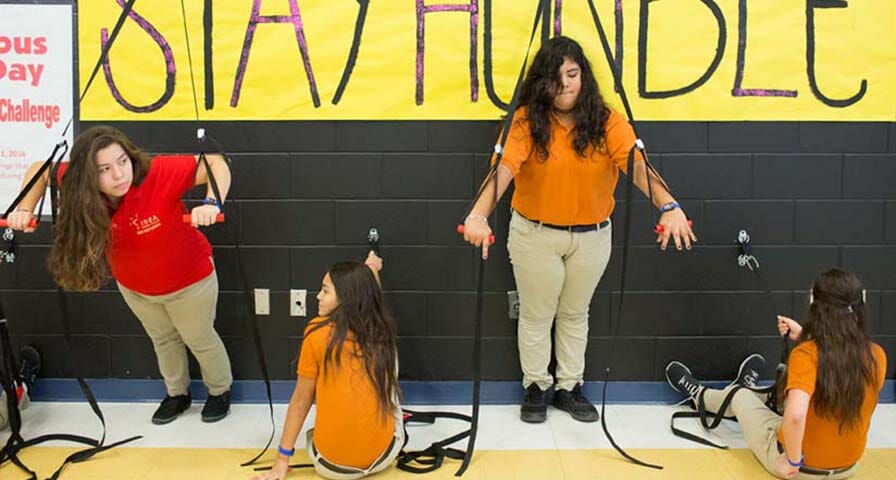Network’s High Schools Achieve Academic Recognition While Maintaining Commitment To Pe Enhanced With IHT Heart Rate Technology
Students across the IDEA Public Schools network continue to demonstrate that a commitment to PE (physical education) helps students meet high academic standards while improving fitness.
The network of Texas public schools produced five of highest rated high schools in the U.S. in 2016-17 while continuing to improve overall student fitness through heart rate training in physical education that includes the IHT Zone wrist heart rate monitors and the IHT Spirit System® software.
Students recently completed their second year wearing the heart rate monitors and learning from data analyzed by the Spirit System.
“People understand why we are using this technology,” said Eren Kirksey, IDEA’s PE Curriculum Manager. “We can see that the kids are focusing better when they come back into the classroom. It is amazing how this simple tool has bridged an entire district.”
Each year, the Washington Post publishes a list of America’s most challenging high schools. The Post ranks schools based on the number of Advanced Placement, International Baccalaureate and Cambridge tests taken by students and number of graduating seniors in the measured school year. In 2016-17, five of IDEA’s campuses ranked highly:
- Frontier College Prep: 3rd
- Mission College Prep: 4th
- San Juan College Prep: 5th
- San Benito College Prep: 6th
- Quest College Prep: 9th
“The IDEA Public Schools network, with nearly 30,000 mostly low-income students in Texas, requires that each take 11 AP courses,” wrote Washington Post columnist Jay Matthews. “Parents applaud their children breaking out of the remedial courses, with homework increasing gradually so they can get used to the load.”
Realizing Academic Benefits of PE
The rankings reinforce Kirksey’s curriculum initiatives, which maintain that students get enough time for physical activity – circuit-based workouts designed to get students exercising at an elevated heart rate – to maximize their academic performance. Principals and academic leaders see the difference the enhanced PE program has had on students and changed the way they address students who may have academic struggles.
“We used to pull kids from PE for academic interventions,” Kirksey said. “At one campus, the principal had a meeting with his staff and told them that these [IHT ZONE heart rate] monitors are going to help kids get smarter in the classroom. The students will be earning the use of the monitors. ‘You will no longer take kids out of PE for academic intervention until they have had at least 30 minutes in PE utilizing the monitors.’”
Students now receive the recommended amount of physical activity – thanks to the commitment to PE – and return to the classrooms more ready to focus on lessons and learn material.
“The end game of what we’re talking about is making the most academically sound kids, but there is a danger to not being able to work out,” Kirksey said.
Improving Physical Fitness While Boosting Social-Emotional Wellness
Over the course of the 2017-18 school year, Kirksey’s data shows that moving to a circuit training model in the network’s PE classes sparked a significant fitness improvement. IDEA’s students recorded a 3 percent reduction in Body-Mass Index by making time spent in PE classes more productive.
“In our highest performing classes, you’re going to see that the teacher has manipulated the environment to enable students to move more freely, which lets them get in their target heart rate zones quicker and stay there longer,” Kirksey said.
During the just-completed school year, IDEA’s students (at 65 campuses) had combined to spend more than 14 million minutes exercising in their target heart rate zones. That commitment to PE not only drives academic readiness, Kirksey, said, but helps students socially by getting them to work together.
“They learn to take ownership of their own ability while they are in that small group setting,” he said. “Plus, we’re building on their social and emotional characteristics of team and family, which is one of our core values.”
By creating physically fit students who are primed for academic success, IDEA strives to teach students skills they can rely on after they graduate and head to college, and beyond.
“The commitment that physical activity is a primary factor in how we’re going to get our kids to be able to grow to success as they head into the real world,” Kirksey said.
Seeking IHT Spirit System information?


